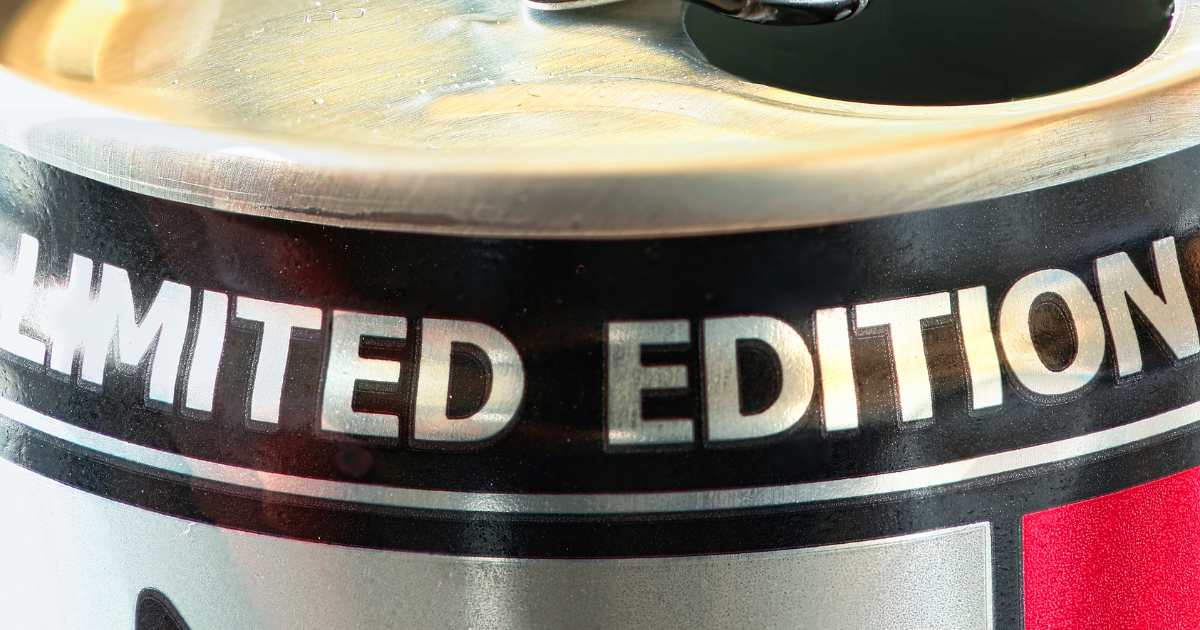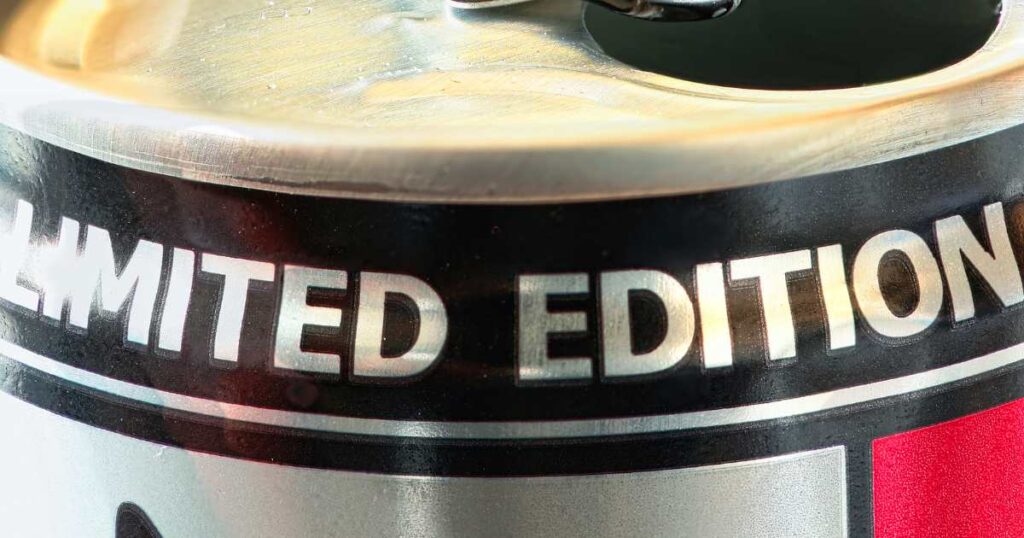
Whether it’s the latest Hug in a Mugg limited edition condensed milk cappuccino or a special product like Cadbury’s Snowballs that make their appearance once a year at Christmas, big brands have seen the value of releasing rare products. It’s not about dropping as many “exclusive vinyls” for your latest album release like Miss Swift; it’s about adding value to a community that is showing their support, all while driving sales.
Limited edition items are the products that customers view to be unique, once-in-a-lifetime buys that won’t be back in stock once the promotion ends. What makes them “limited” is the number of items, the uniqueness of the product amongst others, seasonality, or even trendiness. Sometimes, brands even collaborate with influencers or artists, adding the uniqueness of a limited edition.
The Psychology of Limited Editions
It is evident that the urgency of a product that might not be available for long, or has a limited number of items to collect, plays a significant role in making this sales strategy work.
According to Subramanian Balachander and Axel Stock’s paper, Limited Edition Products: When and When Not to Offer Them, they shared that limited editions generated a higher performance and profitability for brands that were considered high-end and high-quality. It is noted that the trust that higher-end brands carry is a huge factor in this.
Furthermore, shoppers often perceive limited editions to be a status symbol. It can be summed up as follows:
Urgency: Shoppers understand that “if you snooze, you lose.”
Exclusivity: Being one of a select few to own something strengthens brand loyalty.
Premium value: Limited items are seen as more valuable due to it’s rareness, so brands can charge more.
Community: A sense of community is created amongst the group that shares this experience of owning a specific limited edition item.
How Do Limited Editions Help Your Business as An Entrepreneur?
As a consumer, the chances are that you’ve come across limited edition items that you had to acquire. You understand what a consumer is looking for and why, but how can a business owner use this to their advantage? Here’s how:
1. Engage New Customers
Limited editions may tap into a new section of your target market.
2. Encourage Trial Uses
Exclusive offers, such as the offer that SME South Africa and Sage have partnered on, encourage new customers to test out a product or service for a trial period.
3. Increases Excitement
A unique offer that is eye-catching helps your brand stand out. A great example of this is limited edition braai tins from Lion.
4. Manage Public Relations
New releases for a short period of time give brands the opportunity to create awareness for their ESD programmes and brand values.
5. Benefiting Retailers
If your products are sold in retail stores or an online marketplace, releasing exclusive items benefits their traffic too. Whether it is more consumers moving through their doors or more clicks to their website, what is good for the goose is good for the gander.
Advantages and Disadvantages
If you are strongly considering a limited release in your business, you have to be fully aware of the pros and cons.
Advantages
A lot of products can be sold in a short period of time.
You only need to increase marketing for one product or service, not all items all the time.
Disadvantages
These high-sellers are only available every now and then, preventing long-term stable sales.
Products that sell out quickly can negatively affect the customer experience.
Where to Start with Your Limited Edition Product
What do you want to accomplish?
Any task begins with a goal. If you are considering a limited product or service, ask yourself what you intend to achieve. Engage audiences or to test a market? This will help you direct your efforts to what type of limited edition element you will feature: new packaging, a unique product or a brand collaboration.
What is trending?
Consider what is trending, as well as what business you are in. If you are a candle-making business, for instance, you will not be too concerned about making anything other than candles. But where events such as soccer or the infamous labubu are trending, you may consider looking into making candles that resemble a soccer ball or a labubu.
What is your market research and target audience?
After identifying what is popular, you may dive into the intersection of what your target audience enjoys and what trending themes they might be interested in. During rugby season, for instance, many businesses call their products “bok” editions.
Collaborate strategically
Where a unique product calls for a strategic collaboration, such as working with influencers, ensure that it aligns with what is trending and what your audience would like to see.
Set a clear timeline
Every project requires a strict timeline. If you don’t set a timeline, you risk falling behind on your planned launch.
Quality over quantity
Take care to plan a quality limited edition release, rather than just branding a regular item as a rare release.
Price strategically
Tied in closely with quality, price plays a vital role in ensuring the client is willing to pay for the product or service.
Whether it’s the latest Hug in a Mugg limited edition condensed milk cappuccino or a special product like Cadbury’s Snowballs that make their appearance once a year at Christmas, big Read More


